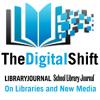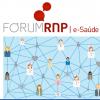Recent posts
Greg Harmon, of Dragonfly Capital, recently opened an investment blog post with an angle that caught my eye:
“Looking for that gift for the nerd that has everything? Well how about a supercomputer? These babies have the power of 50 million laptops. That should get them an edge playing Xbox against their friends.”
Harmon made a quick pivot and went on to pitch giving “the thrill of supercomputing” by making presents of supercomputer stock from companies, such as Cray.
Julia Chance Gustafson has been at the forefront of major changes in librarianship since arriving at the College of Wooster on Feb. 1, 1982.
Currently a research and outreach librarian, Julia started her career as a reference librarian, with responsibilities for coordinating the College of Wooster’s library instruction program. Since then, Julia worked as an electronic services librarian and access services librarian.
In today's news we look at a bill that will help military students who are pursuing a degree in one of the STEM fields, the University of Chicago to host Barack Obama's presidential library, the IARPA funding an even more powerful supercomputer, central Ohio students taking part in the Hour of Code campaign, and a look at the growing demand for technology skills.
Today's news looks at using a supercomputer to find a cure for Ebola, schools allowing computer science to count for graduation requirements, using the acronym STEAM instead of STEM, Southern Ohio schools benefiting from a learning grant, and Cleveland getting a 100-gigabit broadband network backbone.
Today's news looks at IBM's supercomputer being used for an app to give dieting advice, students being less interested in becoming STEM teachers, Ohio's manufacturing gaining jobs for the third year in a row, Ohio's public colleges being more selective, and veterans being able to earn a degree for free from Coursera.
The active librarian community in Ohio shouldn’t surprise me anymore, but it still does when I discover yet another local group or event dedicated to a niche aspect of libraries. Ohio IR Day on Friday, October 24, 2014, exemplified the communal desires of Ohio librarians. Even , there were over 30 participants for this all-day event, most from academic libraries with one from the Ohio History Connection (previously the Historical Society) and even a Kentucky librarian
Ask college librarians how prepared they think incoming freshmen are for college-level work, and their answers are sadly consistent: today’s students aren’t prepared. Bridging that gap is a common interest for OhioLINK, Ohio’s academic library consortium, and INFOhio, Ohio’s PreK-12 digital library. Drawing on their 20-year history of working together–along with public libraries and the State Library of Ohio–to cost-effectively provide research resources to all Ohioans, OhioLINK and INFOhio are now investigating the next step. Using a common tool–EDS–but two different approaches, OhioLINK and INFOhio are transforming research with search and discovery and helping ease the transition to college for Ohio’s students.
Today we look at the world's largest telecommunications equipment maker placing more focus on broadband expansion, the number of student loans in default declining, online learning efforts through the University of Florida, Australia's new supercomputer, Youngstown's STEM school, and Harvard-MIT partnering to offer high school students online courses...
Today's Digest focuses on the University of Virginia's new computing cluster and big data research, STEM jobs open for Women in South Carolina, startup founders applying educational experiences, University of Arkansas' diverse freshman class in the college of engineering, and Hilliard, OH looking to bring in an Amazon data center...
The staff of the Ohio Academic Resources Network (OARnet), a member of the Ohio Technology Consortium (OH-TECH), has been working with their counterparts at The Ohio State University to deploy a Science DMZ to help accelerate research at the university. A Science DMZ is a computer sub-network that is structured to be secure, but operates outside of the performance restrictions of a firewall. The two-year funding for the project comes from the National Science Foundation’s Campus Cyberinfrastructure – Network Infrastructure and Engineering Program (CC-NIE) program.
- ‹ previous
- 10 of 22
- next ›
























